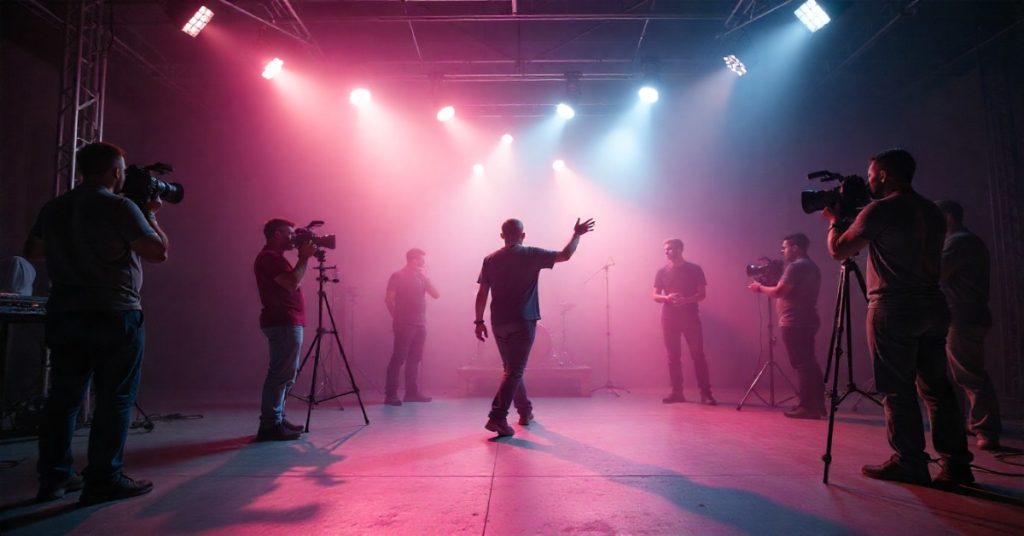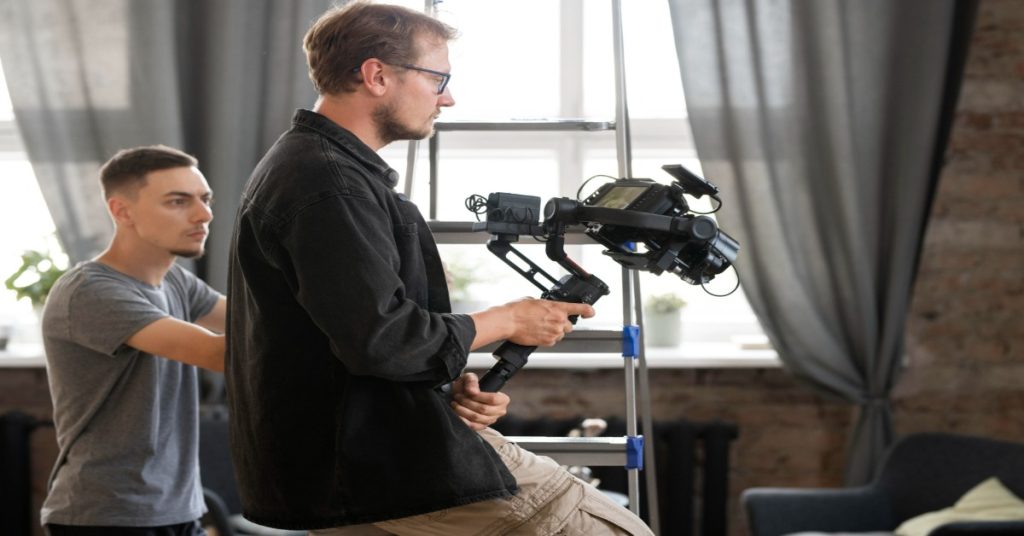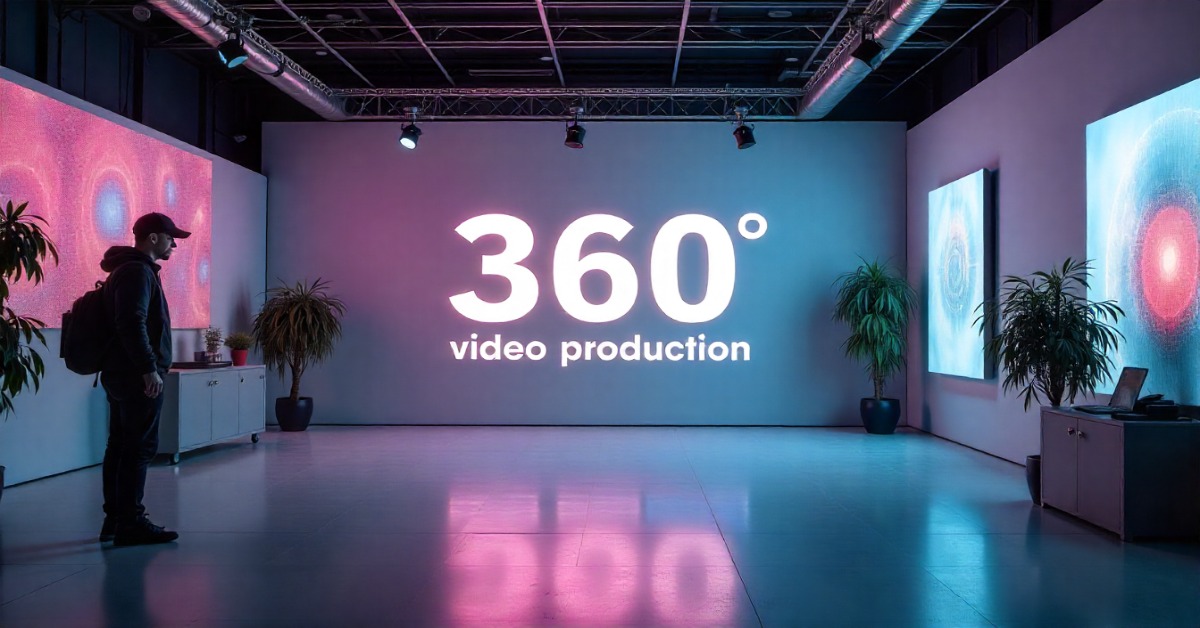Common Mistakes to Avoid in 360-Degree Video Production
Producing 360-degree video is exciting as it offers a different experience that traditional formats can’t replicate. It takes viewers from simply watching a story to living inside it by enabling us to tell stories in dynamic ways, pushing creative boundaries. But with that creative freedom comes a unique set of challenges that many overlook, especially when transitioning from traditional video production.
Table of Contents
It’s easy to assume that adding an extra dimension of view just means more cameras or more angles. In reality, it means rethinking everything, the camera movement, post-production workflows and how your audience moves within the story and not just through it. Making 360-degree videos demands a new mindset, different tools, and a deeper understanding of how audiences interact with immersive content. The learning curve can be steep.
Without the right approach, immersive content can quickly become disorienting or difficult to follow. Viewers could feel distracted or disengaged if production doesn’t respect the rules of immersive space.

As 360-degree content becomes increasingly integrated into fields like virtual tourism, real estate, education, and journalism, it’s crucial for creators to avoid common pitfalls that can ruin the viewer’s experience. Let’s explore these mistakes and how you can avoid them.
7 Common Mistakes to Avoid
1. Excessive or Erratic Camera Movement
Keep movements slow and smooth, and provide a frame of reference, like placing the camera in a vehicle.
Why it’s a problem:
In traditional filmmaking, dynamic camera movements add energy. But in 360-degree video, abrupt or jerky motion can quickly make viewers feel nauseated or disoriented, particularly when viewed through VR headsets.
Real-life example:
Immersive VR filmmakers often rely on minimal camera movement to maintain viewer comfort and reduce nausea. The BBC notes that “camera movements must be approached with care, generally only moving forward and at a slow and even pace, with a clear, stable horizon in view” to avoid disorientation or motion sickness.
Tip:
Use smooth, deliberate movements. A camera mounted on a slowly moving vehicle or gimbal can offer movement without causing motion sickness. Always consider the comfort of your audience.
2. Unlevel Horizon Lines
Ensure your shots are leveled during filming and correct any tilts in post-production.
Why it’s a problem:
A tilted horizon can instantly disorient viewers. Even subtle deviations from a level frame are more noticeable in immersive formats because the viewer controls the camera orientation.
Tip:
Use bubble levels during setup and check horizon lines meticulously during editing. Most stitching software like Adobe Premiere Pro or Insta360 Studio has tools to correct tilt in post.
3. Poor Scene Pacing
360-degree videos require a slower pace than traditional videos. Give viewers enough time to explore each scene without making the story drag. Experiment to find the right balance.
Why it’s a problem:
In traditional videos, the director controls where the viewer looks. In 360-degree videos, the viewer chooses their focus. Fast-paced cuts leave no time to explore, leading to confusion and cognitive overload.
Example:
Panasonic Presents: Access 360° World Heritage is a National Geographic Channel series. In this series, each 60-minute episode transports viewers through remarkable UNESCO World Heritage sites in an immersive, panoramic format. This extended runtime allows viewers the time to explore and absorb the environment naturally.
Tip:
Let scenes breathe. Consider leaving each shot on screen for at least 15–20 seconds. Test different pacing with real viewers to find the sweet spot.

4. Lack of Directional Cues
Without cues, viewers might miss important parts of the scene. Use subtle visual or audio cues to guide their attention to key elements.
Why it’s a problem:
In a 360-degree sphere, viewers can look anywhere, and they will. Without subtle guidance, they might miss critical parts of the story, leading to disengagement.
Tip:
Use environmental cues like lighting, character movement, spatial audio, or even voiceover prompts to nudge viewers in the right direction. For instance, a dog barking in one direction may cause a user to instinctively turn toward the sound.
5. Ignoring Stitch Lines
Be mindful of where the footage from different cameras is stitched together. Avoid placing important elements along these lines to prevent visual artifacts.
Why it’s a problem:
360-degree videos are usually shot with multiple lenses and then stitched together. Poor stitching can lead to visual artifacts, especially where the footage meets, creating distracting lines or even warping important elements.
Tip:
Avoid placing key subjects at stitch boundaries. Most 360-camera software offers stitching previews. Use them to identify trouble zones before finalizing shots.
Example:
In Inside Abbey Road, over 150 360-degree panoramas were captured using LIDAR scans and high-definition imaging, and archival photos and videos were integrated in the exact locations where they occurred to ensure a visually coherent and immersive experience.
6. Not Testing on Multiple Devices
Always review your video on various devices to ensure a consistent experience.
Why it’s a problem:
A video may look fantastic on a desktop player but fail miserably in a VR headset or mobile device. Performance, resolution, field of view, and interaction all vary by platform.
Tip:
Test your content across multiple platforms like VR headsets (like Meta Quest), smartphones (iOS and Android), and desktop browsers. Use player analytics (e.g., YouTube or Vimeo 360 stats) to see where viewers drop off.
7. Ignoring Viewer Comfort
Avoid rapid cuts or sudden movements that can cause motion sickness. Use gradual transitions and maintain steady pacing.
Why it’s a problem:
Rapid transitions, excessive motion, or even poor frame rates can cause eye strain or dizziness. Comfort is key for long-term engagement with immersive content.
Tip:
Stick to slow camera movement, soft fades instead of hard cuts, and consistent lighting to avoid sudden visual shifts. Keep frame rates high (ideally 60 fps or above) for a smooth experience.

Conclusion
360-degree video production is all about crafting an environment where the viewer feels both free and guided, immersed but never overwhelmed. By avoiding these common mistakes, you improve your storytelling and ensure that your audience enjoys a seamless and engaging experience.
The future of immersive media is bright, but success lies in attention to detail. Mastering the basics like smooth camera work, smart pacing, and viewer-first design can elevate your content and make it stand out in a crowded space.
As the demand for immersive content grows, learning from common production pitfalls saves time and sharpens your creative edge. It helps you build experiences that truly connect. Continue pushing boundaries, learn through doing, and create immersive content that provides a rich experience to the viewers.
Read More
What is Multi-Camera Editing and Why You Should Use It?
The Basics of Color Grading in Video Production
How Can You Use VFX in Corporate Videos to Engage Viewers?
Frequently Asked Questions (FAQs)
Q1- What is a 360-degree video?
A 360-degree video is an immersive format that records all directions at once, allowing the viewer to control their viewpoint. It’s typically viewed using a VR headset, mobile device, or desktop player.
Q2- How to create a 360-degree video?
You need a 360-degree camera (e.g., Insta360, GoPro Max), a stitching software, and a platform that supports 360 playbacks (like YouTube or Facebook). Planning, pacing, and viewer comfort are crucial throughout the process.
Q3- How do people record 360-degree videos?
These videos are captured using cameras with multiple lenses that record in all directions simultaneously. The footage is then stitched together to form a seamless panoramic view.
Q4- What is so special about 360-degree videos?
Unlike traditional videos, 360-degree video places viewers inside the scene. It’s used for virtual reality experiences, virtual tours, immersive storytelling, training simulations, and more.


